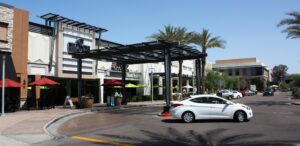Forging the Future of the Built World isn’t just a vision statement — it’s a declaration of who we are and where we’re going. It speaks to the shared drive that unites Kitchell’s people across disciplines and generations — a relentless commitment to build stronger communities, embrace innovation, and shape what comes next.
Across Kitchell, this idea takes form in countless ways: in the strength of our craftsmanship, the creativity of our problem-solving, and the integrity of our relationships.
Here, five voices from across the company reflect on what Forging the Future of the Built World means to them — revealing a collective story of resilience, innovation, and purpose that continues to define Kitchell’s legacy and future.
- Kaley Simon, Market Executive, Kitchell Contractors
“To come out of the forge is to be made of steel — strong, hardened, and made with care.” - Johnathan Coates, Senior Project Manager, Kitchell CEM
“Forging the Future means turning today’s challenges into tomorrow’s solutions. It’s about shaping culture, procedures, and practices that deliver best-in-class service to our teams, clients, and partners across the built environment.” - JoAnne Bourgogne, Director of Risk Management, Kitchell Corporation
“Forging the Future means moving forward in deliberate, innovative ways to ensure our company continues to grow and evolve.” - Kevin Miller, Senior Vice President, Kitchell Development Company
“Forging the Future means doing what Kitchell has always done — operating with integrity, delivering quality, and evolving with new technology to thrive for the next 75 years. - Cameron Glass, Director of Justice, Kitchell CEM
“We don’t just build projects; we create spaces that uphold dignity, spark opportunity, and bring hope to communities. Forging the Future means creating environments that inspire change and serve as a foundation for a better tomorrow.”
As Kitchell celebrates 75 years, Forging the Future of the Built World reflects more than the company’s past achievements — it embodies its promise for the future. Guided by shared values and an unwavering vision, Kitchell’s people continue to build not only remarkable projects, but a lasting legacy of innovation, collaboration, and purpose.


